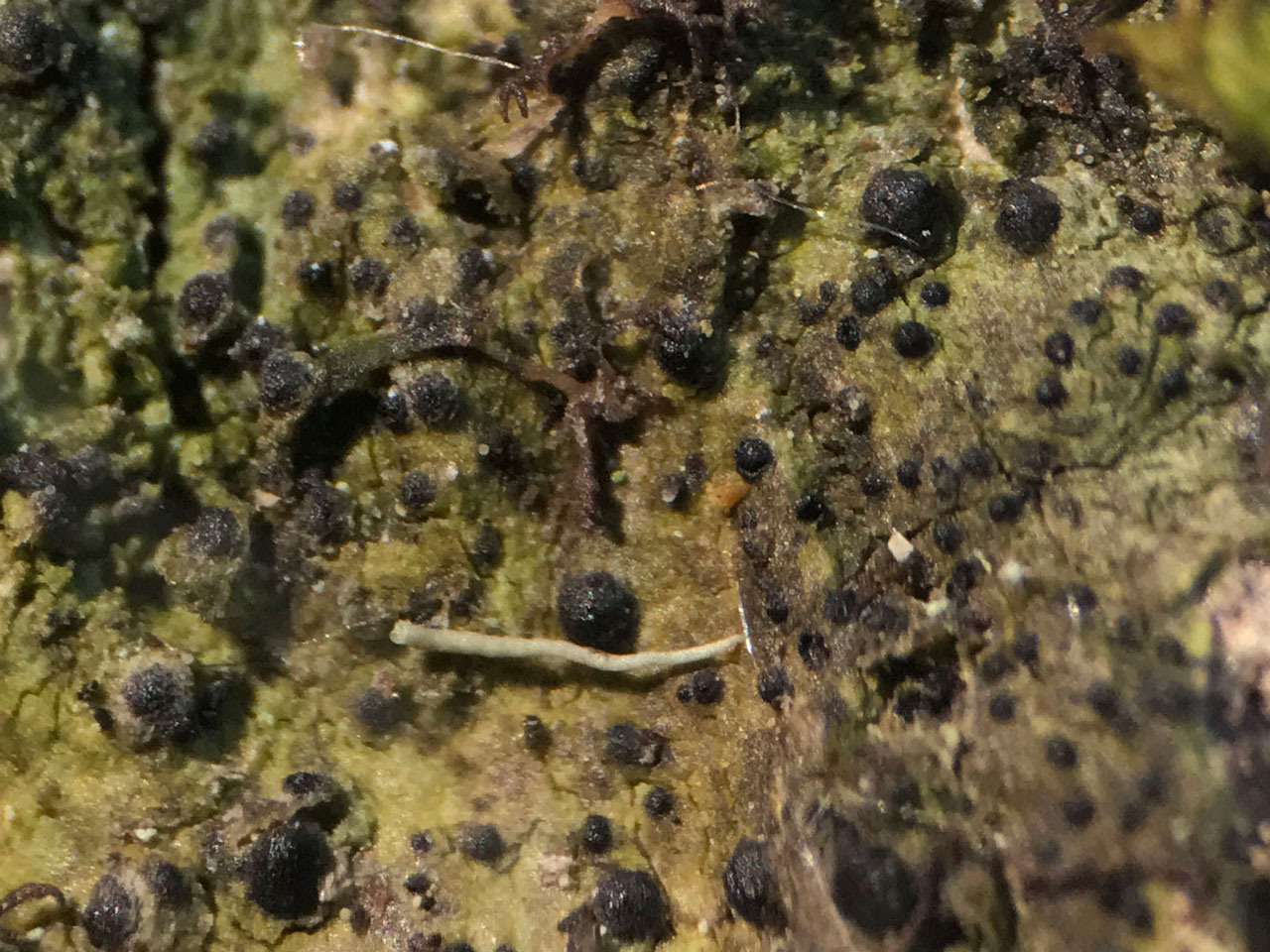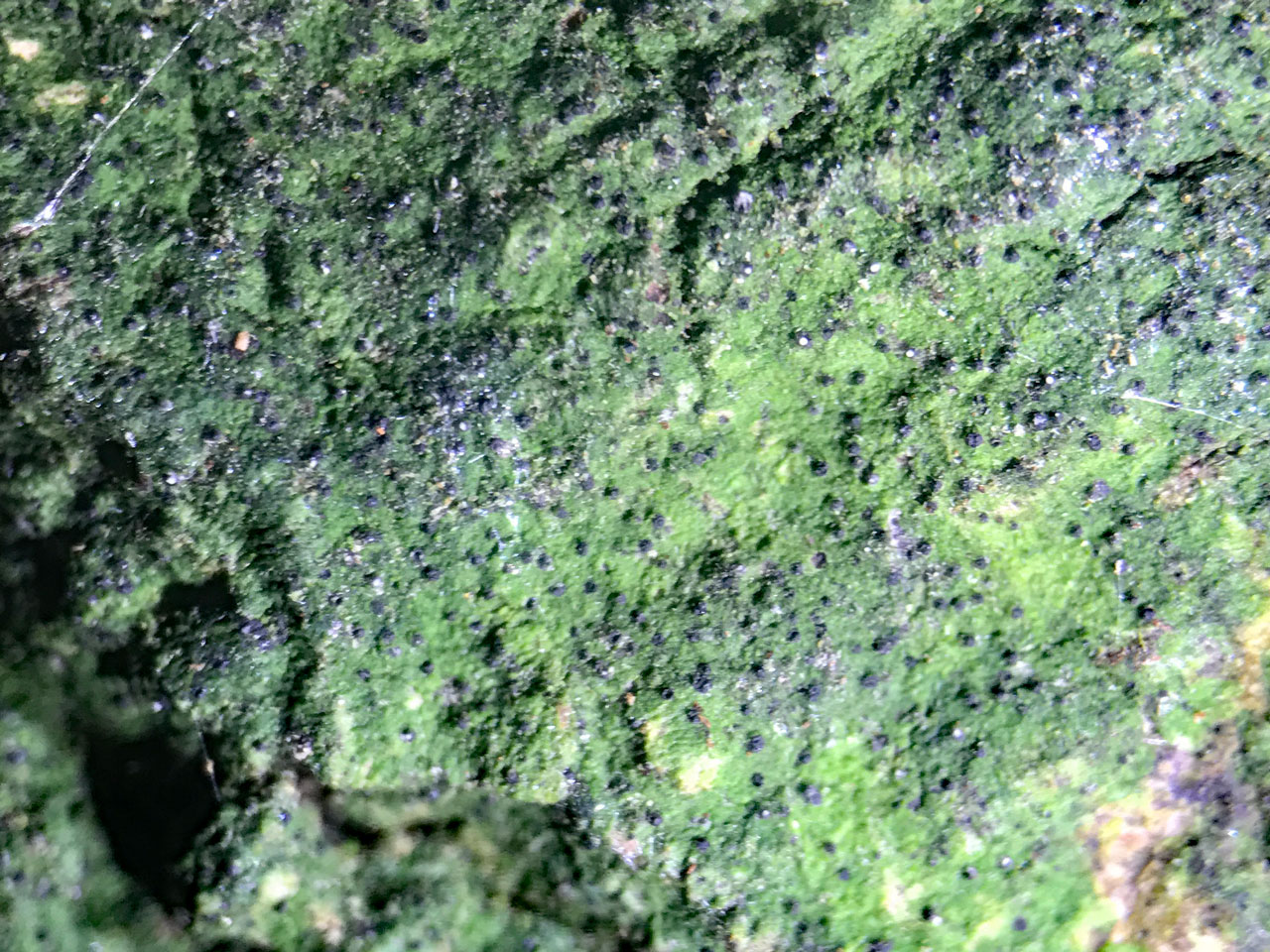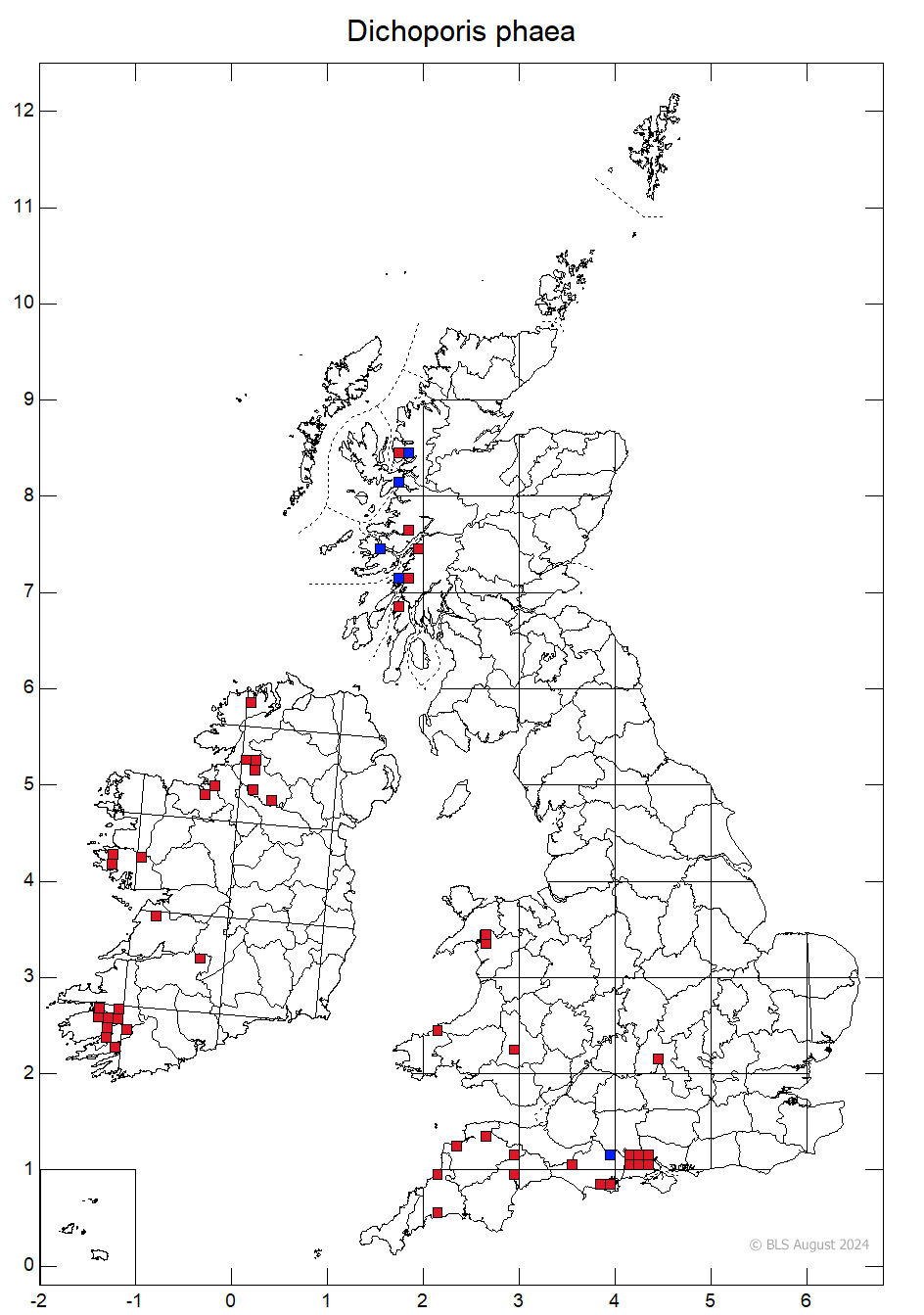A tropical – warm temperate species, originally described from Jamaica, found on shaded base rich bark on veteran trees, but also recently found on damp rocks by streams. Rare and confined to the south and west, but possibly spreading. Recognised by its distinctly green thick thallus, usually only with black macropycnidia with one septate macroconidia on long conidiogenous cells, but sometimes also with larger projecting (pointed) perithecia.
Thallus grey-green or brownish, continuous, usually thicker and fairly swollen, sometimes fairly thin. Ascomata 0.2–0.35 mm diam., projecting, but mostly covered by a thin layer of thallus; involucrellum reaching the base of the exciple; exciple at first colourless, but soon dark brown; paraphysoids to (1–) 1.5 μm diam. Asci cylindrical to ± elongate-clavate. Ascospores (6.5–) 9–12.5 (–14.5) × (2–) 2.5–3.5 (4.5) μm, fusiform, 1-septate, constricted at the septum but not separating into part-spores, cells often containing two oil-drops in historical dried material; perispore often visible, thin, 0.2–0.5 (–1) μm thick. Macropycnidia 100–170 μm diam., globose, brown or blackish, projecting but covered by a thin thalline layer; covered by an involucrellum; macroconidia (6–) 7–8.5 (–10) × (1.5–) 2–2.2 (–2.5) μm, cylindrical, 1-septate, not or scarcely constricted at the septum, each end with a rather short and wide appendage 2–5 × 0.5– 2 μm in size which is often curved, flexuose or helical; in dried material each cell often with two persistent oil droplets; conidiogenous cells elongate, (4–) 7–25 (–27) × 1–1.5 μm; micropycnidia like the macropycnidia but 50–100 μm diam.; microconidia fusiform or subfusiform, 2.5–4 × 1–1.5 μm; conidiogenous cells very elongated, 5–21 × 1–1.5 μm in size.
Ascomata often absent, but specimens are distinguished by the 1-septate macroconidia borne on a very elongated conidiogenous cell. A similar undescribed Dichoporis species (D. ilicina ined) found in southern England and western Ireland also has very elongated conidiogenous cells but has a silver-grey thallus and larger ascospores (14 – 16 x 3.5 –4 µm) and microconidia (9 – 14 x 3 µm)
On bark of Beech, Ash, Oak and Elm in shaded base rich flushed rain tracks or in wound tracks, in areas of old woodland, has also recently been found on damp rocks by streams.

Very local. S. and S.W. England, Wales, W. Scotland, throughout W. Ireland. Judging from the timing of distributional observations, the species may be increasing in range.
A rare species mainly found on base rich or wounded veteran trees. It is quite shade tolerant, and has also been recorded on damp rocks by streams. It also appears to be spreading, with some quite surprising isolated occurrences found recently. Unlikely to be threatened but an interesting tropical – warm temperate species that may be spreading with warmer summers.
Britain: Notable
Wales: Vulnerable
Cannon, P., Coppins, B., Aptroot, A., Sanderson, A. & Simkin, J. (2023). Perithecial genera I, including Acrocordia, Alloarthopyrenia, Anisomeridium, Antennulariella, Arthopyrenia, Celothelium, Cyrtidula, Dichoporis, Eopyrenula, Julella, Leptorhaphis, Leptosillia, Lithothelium, Mycomicrothelia, Mycoporum, Naetrocymbe, Pyrenula, Rhaphidicyrtis, Sarcopyrenia, Swinscowia and Tomasellia. Revisions of British and Irish Lichens 37: 1-59.
Text by Neil A Sanderson based on Cannon et al (2023)


